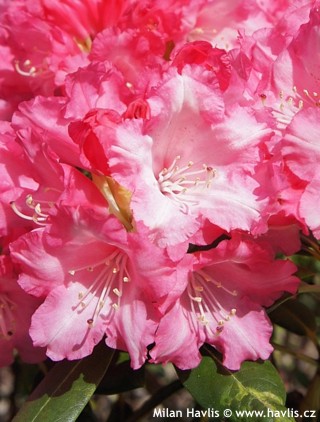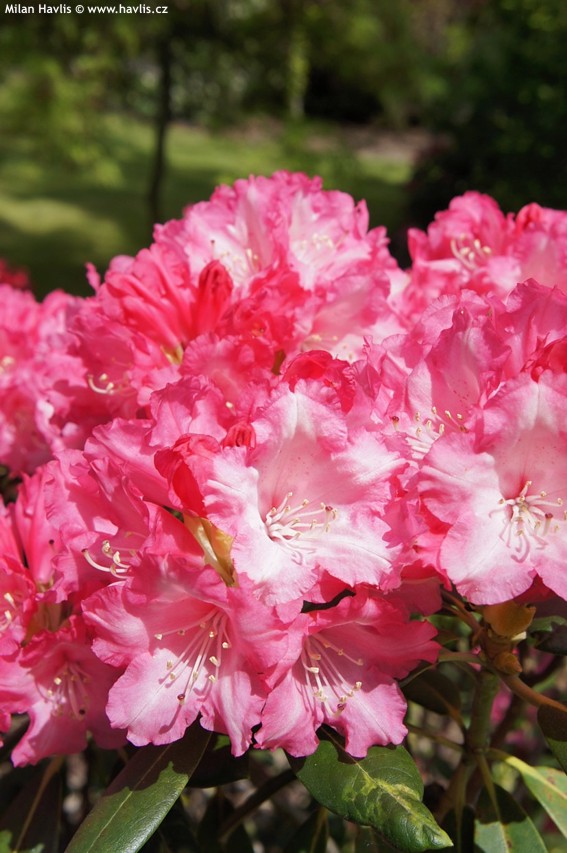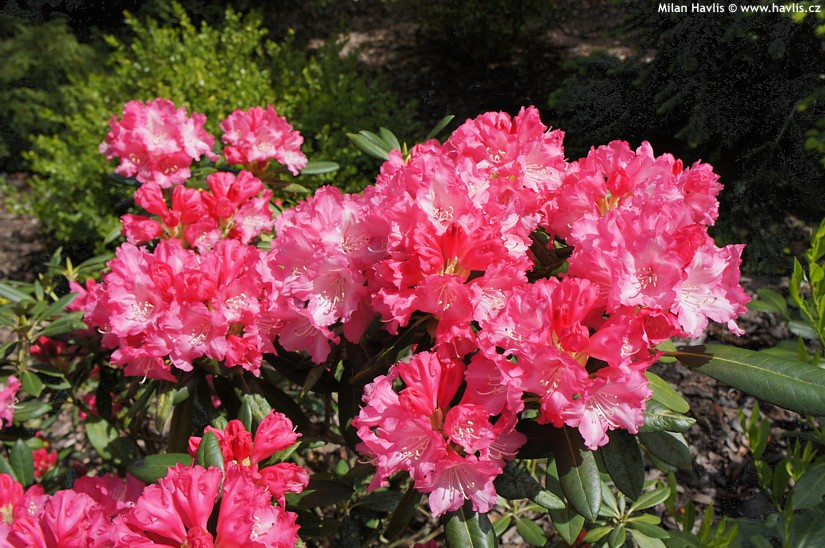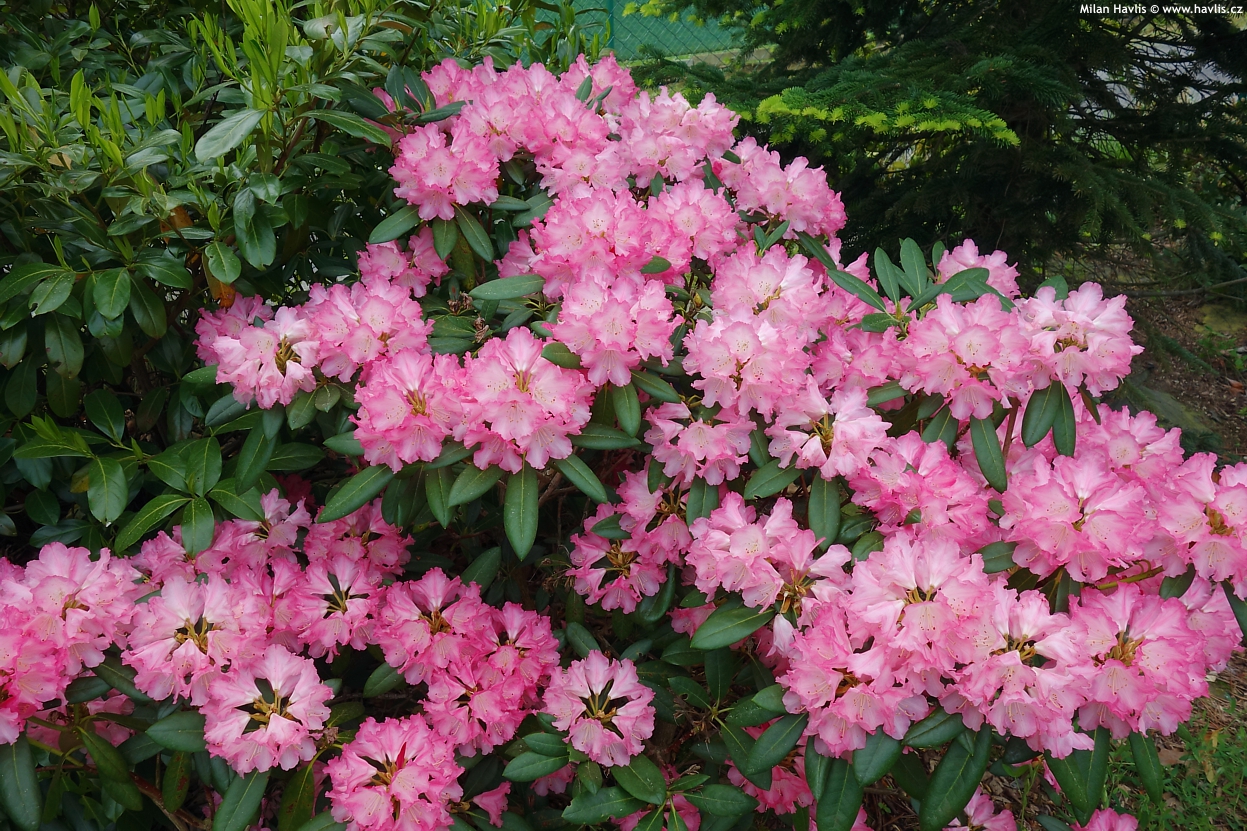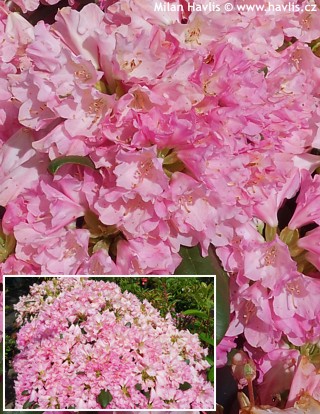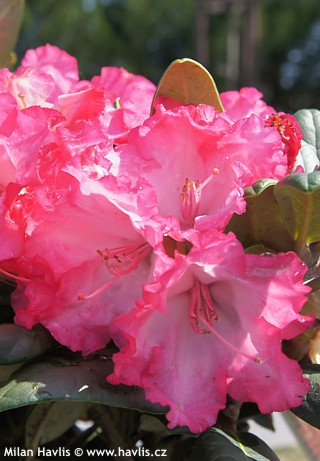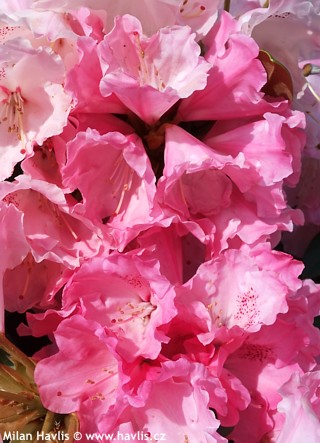Rhododendron (yakushimanum) 'ANILIN' rhododendron
Rhododendron
Yakushimanum rhododendrons were first discovered in early 1900’s on a small island off southern coasts of Japan called Yaku. They grew happily on rocky slopes of this mountainous island in full sun, and were constantly disturbed by wind. Their habit was compact and not very tall. All these features seemed very promising and deserved better examination. The first plants were sent to the UK by a Japanese grower Koichiro Wada in 1934, which set off a long programme of hybridizing brand new, fantastic plants.
Have a guess - what happens what you cross a red rhododendron with a white one, any ideas? Pink of course! Like this beauty named Anilin bred by Hans Hachmann in 1968. It makes trusses of rich pink flower buds which unfold to bright pink flowers first, fading to pale pink outwards and inwards near the margins, and almost white throat. Dotting is very delicate, very light orange red, almost invisible. Handsome leaves are evergreen, leathery, with edges curved downwards, mid green, and partly glossy. Anilin grows faster than most yakushimanums into an airy shrub slightly wider than tall. It prefers full sun.
Tests proved that deadheading of these hybrids does not influence formation of flower buds for the following season. However, as these plants are slow growers and make short new branches, deadheading significantly improves their appearance since the new shoots cannot cover the unsightly dry seed-pods that followed the flowers.
Yakushimanum rhododendrons grow slowly, forming compact mounds. Their mature leaves usually have indumentum of various colours on the undersides. They thrive in full sun and partial shade, they can take full shade, too, but is not ideal. The soil has to be reasonably fertile, well-drained, cool, constantly moist, and of low pH (6 or less) = acidic. They do not require nitrogen but need iron and phosphorus. Their roots spread outwards and are very shallow, therefore never plant them too deep. When planting mix good, lime-free compost with quality peat or leaf mould, and add some slow-release fertilizer. To conserve moisture and to suppress weeds keep them mulched all year round. The layer of mulch should not be too high so that their delicate roots can breathe. No pruning required. Anilin proved hardy to -27°C (USDA zone 5b), and is expected to withstand a few degrees lower.
Last update 26-01-2017

































